I was reading on Dr. Ray Peat’s forum that he recommends gelatin, and my first response was “What the heck is gelatin?”. But after researching this for some time, I am truly amazed at the many health benefits that can be realized with this incredibly cheap and simple home remedy. This is something we can ALL do, easily, and at low cost, without a doctor’s visit, and without prescription drugs, to improve our health.
Bone broth is easily made by boiling animal bones, cartilage, and skin for a few hours, and straining and cooling the resulting soup. Gelatin is the glassy layer which looks like Jello that forms upon cooling. This is the way we used to make soup years ago. It seems mama does know best after all.
Bone broth is high in glycine, one of the non-essential amino acids. Glycine is involved in the regulation and support of the liver and many essential processes in the body. Yes, glycine is non-essential, in that it can be biosynthesized in the body from the amino acid serine in the liver, but of course this assumes that the body has enough of the components and enzymes which could be utilized to synthesize glycine, and that the liver is strong and healthy enough to provide the needed glycine, and many times these are a fragile assumptions.
Yes the body can make it, but there are plenty of reasons to think that even normal, healthy people might not be able to make enough. If someone is in the prime of health, and everything is functioning normally, we might say they have enough glycine. But if we are seeing millions of Americans suffering from stiff joints, skin diseases and other collagen, connective tissue and cartilage disorders, common sense would tell us that they might be suffering serious shortfalls of proline, glycine and other needed nutrients.
A French-Spanish research group, in their review article in 2009, wrote that humans can usually synthesize about 3 grams of glycine, and they usually get 1.5-3.0 additional grams from their diet, so the total yield is 4.5-6 grams per day.
On the other hand, the researchers stated that this amount doesn’t satisfy the daily need of 10-13 grams for collagen synthesis in various tissues (bone, muscle, skin), and because of this, glycine should be considered a semi-essential amino acid.
Glycine has a very broad range of cell-protective and liver support functions. Glycine is utilized for the creation of collagen, muscle, and connective tissue, reducing inflammation, as well as converting glucose to energy. It is essential in growth, healing, and the maintenance of health, digestive and nervous systems. Glycine has a calming effect and helps promote restful sleep. Studies have shown that glycine also helps improve memory retrieval loss in those that suffer from a wide variety of sleep-depriving conditions, including schizophrenia, Parkinson’s disease, Huntington’s disease, jet lag, and overwork.
And all these benefits from easily made chicken soup, legally available without a prescription, absolutely delicious, and at very low cost. Amazing.
I respectfully defer to Dr. Ray Peat to explain some of the remarkable benefits of glycine. It’s a long article but I recommend you read it when you have some free time:
http://raypeat.com/articles/articles/gelatin.shtml
I have been making “Bone Broth” for a few weeks now, and it is so cheap and simple to make. First, we need the raw materials – animal bones, cartilage, and skin. The best parts to use for this are the ones with a lot of cartilage: chicken feet, necks, knee joints, pork knuckes, etc. At the local Thai supermarket, I can buy chicken carcasses, which have had all the meat removed already, for 19 Thai Baht/kg. (about $.30/lb). We don’t need or want the meat, just the bones, cartilage, and skin. Also available are the knee joints, necks, and other parts that no one wants (BUT WE DO!).
Here is what I bought today.
1.4kg of chicken carcasses for 27 Thai Baht
(about 3 pounds of chicken carcasses for less than $1).
But, this is what I found makes the BEST gelatin: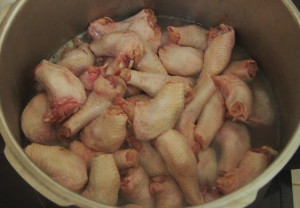
chicken knee joints. This is essentially waste product at the butcher, but it has a lot of skin and cartilage, which is precisely what we want to use. I paid about $.50 per pound.
I use a pressure cooker, because it significantly reduces the time and energy used to adequately boil the bones. A slow cooker can be used if you have one, but can take up to 10 hours. A pressure cooker speeds that up to two hours.
Put all the raw materials in the pressure cooker and add water sufficient to cover the bones. The bones and cartilage will become soft, and lose structure, and collapse into the broth after boiling. Add 2 tablespoons of vinegar (apple cider vinegar if you have it) to assist dissolving the collagen. You will need more for a large pot.
Here is what it looks like before boiling.
(Don’t forget to the 2 tablespoons vinegar)
(I use up to 1/2 cup vinegar for a large pot)
This is after two hours boiling in the pressure cooker.
You can see how the bones have softened and collapsed into the broth.
(I use the lowest heat setting, it’s enough to keep a slow boil going).
(Set you alarm clock so you don’t forget it).
Here is what my finished gelatin looks like:
Here is my delicious tomato goulash (remove the macaroni for paleo). Adjust the amounts to your tastes.
Ingredients:
- Gelatin
- Tomato Sauce and diced tomatoes
- Broiled chicken (cubed)
- Macaroni
- Scrambled egg
- Onions and Garlic
- Coconut oil
- Black olives
- Yummy!
For some delicious variety, try adding some chunks of cream cheese, or ricotta cheese, or mozzarella near the end for a rich Italian flair. Add some onions, carrots, jicama, or water chestnuts for some delightful crunch. Jicama and water chestnuts contain a starch that has the rare property of remaining crunchy even after cooking. They are one of the finest sources of dietary fiber; a particularly excellent source of inulin, (not insulin lol), a soluble dietary fiber. The root pulp provides 4.9 mg or 13% of fiber. Inulin is a zero calorie sweet inert carbohydrate (wonderful news, right?). It does not undergo metabolism inside the human body, which make jicama an ideal sweet snack for diabetics and dieters. Endless possibilities.
From my own personal experience, I have found that eating this totally eliminates any food urges I had. I don’t feel hungry, I don’t have cravings or urges. I feel full, yet I can lose weight. If you eat a small bowl of this, you will feel completely satiated. Try it for yourself, and of course let us know your results in the comments below thanks.
Here is an example of a small meal commonly eaten by poorer people from the provinces in Thailand: Barbequ’ed Pig’s Ear with Sticky Rice and Spicy sauce. Pig’s ear is made almost entirely of cartilage. This is precisely the raw material that we could use to make gelatin. It might seem not so appetizing to us, but this is just our own cultural bias. They love it, and if you put this next to a slice of pizza, they will choose the Pig’s Ear every time. And no obesity in those areas of the country. It does make me wonder: who is doing it right? Us? Or them?
Please don’t forget to check out our other post on this subject, which discusses some fascinating lab studies which showed that glycine significantly lowered cholesterol in lab mice here:
https://thyroid-s.com/bone-broth-lowers-cholesterol/
For further reseach about this, please see the following references:
http://www.naturalnews.com/040493_bone_broth_immune_health_nutrients.html
http://www.phoenixhelix.com/2013/02/18/healing-foods-bone-broth/
http://www.thepaleomom.com/2012/03/health-benefits-of-bone-broth.html
Top 23 Proven Health Benefits of Glycine (with references)
http://selfhacked.com/2016/04/11/glycine-little-protein/
Suffering from joint pain and arthritis? Try collagen and gelatin:
http://www.naturalnews.com/043398_joint_pain_collagen_arthritis.html
And another recipe for chicken bone broth:
http://www.thepaleomom.com/2012/03/recipe-chicken-bone-broth-revisited.html
The National Academy of Sciences recently reviewed the nutritional requirements for working adults (male and female soldiers, in particular), and suggested that 100 grams of balanced protein was needed for efficient work. For adults, a large part of that could be in the form of gelatin. It means that the raw materials that we are using, which are basically waste materials, could be used to provide a large part of a working adult’s daily protein requirement.
Individuals with kidney or liver disease should not consume glycine without consulting their doctor. Taking any one amino acid supplement can cause a disruption of the citric acid or Krebs cycle, and cause a build-up of nitrogen or ammonia in the body, which makes the liver and kidneys work harder to remove waste. Anyone taking antispastic drugs should consult a physician before supplementing with glycine, since it theoretically could increase the effects of these medications.

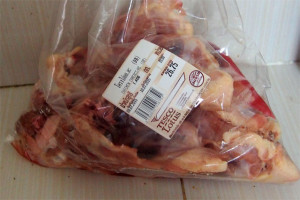
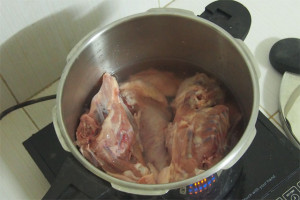
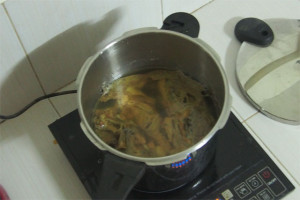
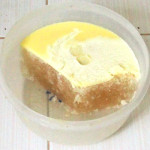
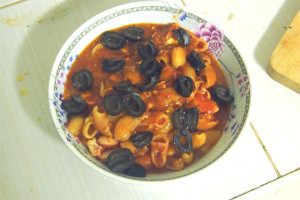
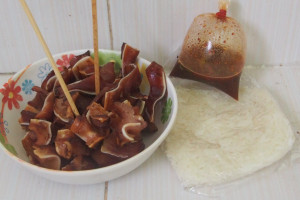
My wife started taking colloidal minerals daily and she cut her thyroid dose in half. She also says things have leveled out more, not getting really tired at times. I suppose it is similar to the bone broth but with perhaps a few more minerals. I am convinced modern industrialized & civilized humans are malnourished.
i buy gelatin in bulk….not in the tins. at age 60, after four years eating (actually drinking) gelatin daily…and finally and forever banned any and all food restricting (dieting) i have stronger fingernails that don’t break and split like they used to, better skin, softer feet. i dissolve 1-2 (usually 2) tablespoons in cold water and then heat it to make my breakfast coffee. ok, i use instant coffee, sugar and the gelatin water…and heat in the microwave until the sugar is dissolved well. once or twice a day. i make a huge mug of coffee and may not drink it all in one sitting. if not, i set it in the refrigerator…it sets up. i reheat to hot to finish drinking it or sometimes i just eat the coffee gelatin. some times i’ll put a dab of butter and/or coconut oil in it if i am considering it a liquid breakfast. with milk on the side.
just before the final phase of better nails, my thumb seemed to have a hump on it. i watched it and it was moving down as the nail grew. apparently, that was the new and improved fingernail.
food, gelatin and thyroid have improved the health i was denying myself with decades of dieting and food restrictions, ignoring hunger for hours beyond hunger.
Where do you buy gelatin in bulk?
i use great lakes gelatin which is made from grass fed beef. i got tired of the bone broth stinking up the house.
i am not sure if one is better than the other. any ideas?
Hi, I found out several Glycine products in tablets on Amazon and was wondering if it has the same effect. I am not sure but people take this product to able to sleep…I honestly don’t have time to cook so was wondering if this product will have the same effect??
Thank you for your answer.
I’m going to give this a try but with bones from organic chickens. They pump chickens with a lot of antibiotics and hormones through injections and feed. I don’t want to consume them.
Hey Mike, I mentioned “necks” in my post above, because they are exactly the kind of bones and cartilage that we want to use, but hadn’t thought of the thyroid aspect. Interesting idea, and here is a guy that is doing exactly that:
http://losingcreekfarm.blogspot.com/2011/02/thyroid-broth-chicken-necks.html
Peter,
Have you ever experimented with chicken/fish head/neck soup?
I believe these would normally contain thyroid glands and would hopefully be pro-metabolic.
It sounds like you should have ready access to at least the chicken parts in Thailand.
Regards,
Mike
Precidely! Gelatin looks like a layer of Jello upon cooling. That’s the stuff you want.
Thanks for posting this, I think I’ll give it a try, perhaps with turkey bones… When one cooks turkey is all that jelly-like stuff at the bottom of the pan gelatin?